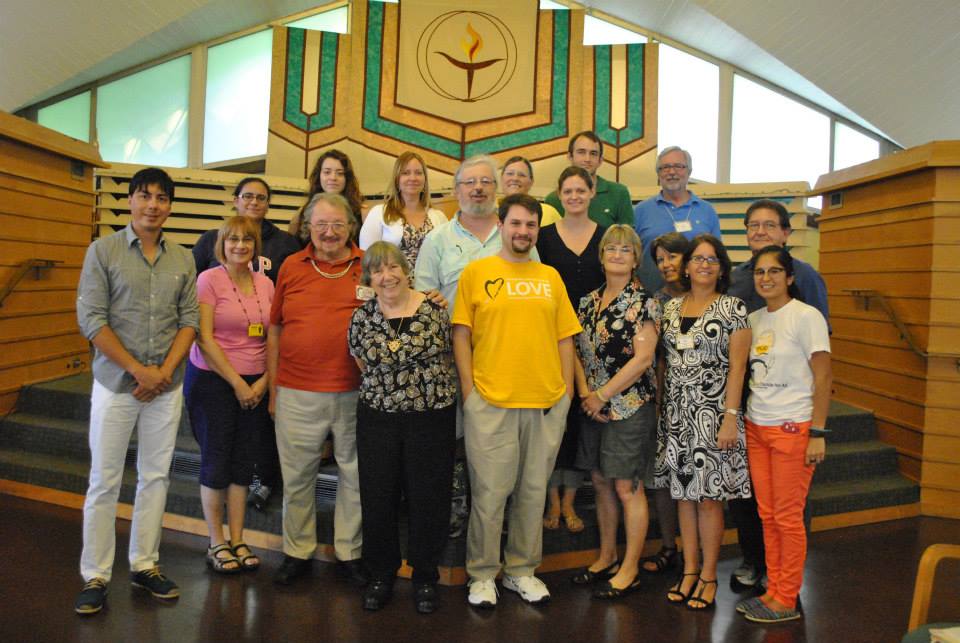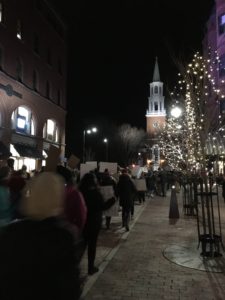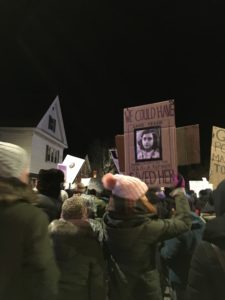When I decided to visit an ICE detention center and meet some of the people who were held there, I didn’t expect to be afraid when the time came, but I was.

Maybe it was the ICE detention center’s location down a narrow road surrounded by thick Florida Everglades vegetation. Maybe it was all the security precautions at the gate, where my spouse and I were checked off a list and issued photo name badges. It surely wasn’t the staff, who were almost invariably not just professional but welcoming. Maybe it was being divested of almost everything material I usually keep safe and close – like the phone that connects me to everyone I love, my purse with the means of buying my way out of trouble. Both were locked in the trunk. All I was allowed to take inside was my driver’s license and the car key, and the car key had to be locked up once we got into the lobby. We didn’t have the quarter for the locker, so the guard said “Just put it in there. I’m right here so nobody’s going to take anything.”
Brrrrr….
Part of what scared me was the chill. It was freezing and blowing, just as we hear it is for the children and adults we read about. The lobby was spacious and bright, with windows all along one side. It was immaculately clean. The furnishings were relatively humane, with chairs in slightly curved groupings rather than straight lines. I’ve been through more intimidating security at the airport. But viscerally, it unsettled me. I learned to walk up and down to stay a little warmer, and discovered a portrait of Trump with a self-satisfied smirk on his face. It did not reassure me. The Friends of Miami-Dade Detainees, who kindly arranged our visits, had done a great job of briefing us, so we knew what to expect at the ICE detention center. But the dread I felt was deeper than all those rational reassurances.

Even though we were accompanied by a friendly female guard when our names were called, I felt closed in when we came into a small anteroom where the door to the lobby behind us was locked, and the door to the corridor ahead of us was unlocked. A long walk down that corridor, in single file. Another locked door, another corridor, and then a row of badly lit booths stretched off to our left. The guard showed me where to sit, opposite a guy in an orange uniform with earnest dark eyes. Dirty glass sliced the space between us, and we each picked up an ancient black telephone receiver. We each said our names.
All of a sudden, I relaxed. Here was the man I’d been wanting to meet: not a statistic, not a news headline, not a “detainee,” but another human being who wanted to talk with me as much as I wanted to talk with him. Immediately, I warmed to him. His face was uneasy but open as he taught me to say his name correctly at my request. “I wish we’d met in other circumstances,” I said, “It would have been nice to just sit and have a cup of coffee together. But I guess we can’t do that today.” We both laughed ruefully. Then he began talking, and more or less didn’t stop until the guard told us the hour was up. I learned about what brought him to the U.S. as a child, what he faced in school, and how he “made a mistake” that brought him to the ICE detention center. And I learned about his aspirations for the future, if he could just go home to the state where he was brought up.
Our Surprising Conversations
Over the next three days, as I visited seven other English speakers, I spent most of my time waiting in the chilly lobby, and thinking about what I had heard. Some stories were as terrible as I had feared. I kept my composure, but seeing the tears of one man who didn’t have the money for a video call with his young child almost undid me. Fortunately, thanks to the fundraising of the Friends of Miami-Dade Detainees, I could offer a solution for that. A few men were almost crushed by fear and despair, and no wonder. But the majority, to my astonishment, were still able to smile and engage with a stranger. They were curious about the world (“Is the climate really changing?”) and engaged in reading (mostly self help books and literature), with some writing poems and memoirs. Nearly all had goals and dreams for the future, and almost all had deep ties to family and friends to whom they longed to return from the ICE detention center.

Why were they there?
Apart from the specifics of each person’s situation, these visits were a stark reminder for me about what it means to be a brown or black male in the United States, and how racism plays out in individual lives. The meager choices. The pressure to join any group that gives any coherence or protection. The appeal of the escape of alcohol or other drugs. The assumption that you are or will be a criminal. The expectation that you will never go to college or make something of yourself. Some had succumbed to the temptations or necessities (depending on one’s world view) presented by their status in a racist society. Some had not; they were wrongfully convicted, or took plea deals for crimes they didn’t commit rather than risk a jury trial. Others were there by accident: a negligent or malicious family member had not done the proper paperwork at the proper time, for example. One was too law-abiding, rounded up and sent to the ICE detention center when he reported for a check-in instead of disappearing as he could so easily have done. Some were interested in me and my life; others just needed to talk.
After my first visit, I can’t say that my queasiness about the whole situation went away, but I wasn’t afraid any more. After all, I had a friend inside.
Actions you and I can take:
Please donate to the Friends of Miami-Dade Detainees here. FOMDD uses the funds to provide phone cards so the people inside can talk to their families and friends, and to send a book of the person’s choice. They also organize pro bono lawyers to help assess each person’s situation and find the appropriate longer term representation.
Locate your nearest ICE detention center or equivalent. Many people in immigration detention are held in local facilities, even hospitals. Scroll down to “Active ICE Facilities” on this page.
See if there is already a visitation program that you can hook up with here.
If there isn’t, start one; here’s a complete guide to how you can proceed. Any community group is entitled to ask.
Don’t let the people in immigration detention disappear. Think about them, talk about them, write to them, remind our politicians of them, and visit them.


